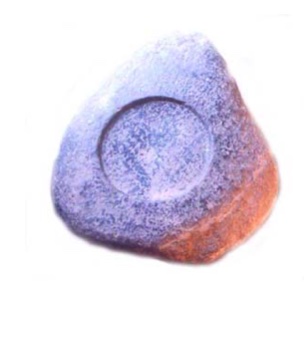Bhatiprolu script
This is a collection of articles archived for the excellence of their content. |
Inscribed lid of stone reliquary

From: Chennai Museum
Bhattiprolu, Krishna District, Andhra Pradesh. About 3rd-2nd century BC.
At Bhattiprolu, a village in the Krishna district of Andhra Pradesh, where Alexander Rea discovered inscriptions on stone caskets, the script of which is of a special variety.
This stone casket is considered to be the Rosetta stone of South India as Tamil and Asokan Brahmi scripts are incised side by side enabling correlation.
Some of the letters are peculiar and differ substantially from letters of the Asokan variety denoting the same values. The inscription speaks of the members of the guild- Vacha, Cagha, Jeta, ambha,Tisa, Reta, Acina, sabhika, Akhagha, Kela, Kesa, Maho, Seta, Chadika, Okhabula, Sonutara, samana, Samanadasa, samaka, Kamuka, Citaka.
The neglect
2016/ neglect of Buddhist relic caskets
P. Sujatha Varma, March 15, 2022: The Hindu

From: P. Sujatha Varma, March 15, 2022: The Hindu
Scholars and archaeologists want the precious objects transferred to A.P. The caskets yielded valuable treasure that included black stone granite receptacle, small semi-spherical vessels containing a crystal prism.
Gross neglect of Buddhist relic caskets datable to 3rd century BC recovered from Bhattiprolu stupa in Guntur district of Andhra Pradesh at the government Museum in Chennai has angered Buddhist scholars and archaeologists of A.P. They want the government to open dialogue with its Tamil Nadu counterpart for transfer of the caskets. These priceless caskets are huge in size, biggest in Indian context. Five such relic caskets were recovered from a Mahachaitya at Bhattiprolu, built by king Kubiraka in the 3rd century BC. The stupa, which was covered by rank vegetation, was first discovered in 1870 by British official Boswell. In 1872, Robert Sewell, during operations on top of the Mahachaitya, found a stone casket containing a crystal phial with some beads and pearls. A clay bowl with a receptacle made of soap stone, ashes and bits of a gold leaf were also found.
The caskets yielded valuable treasure that included black stone granite receptacle, small semi-spherical vessels containing a crystal prism, gold flowers, bits of copper, a copper ring, pearls, brown metal cups with gold beads studded at the apex and bottom, a thin gold sheet depicting a trishul symbol, triangular gold cakes, silver punch marked coins arranged in swastika shape were found.
Another similar receptacle consisted of an upper lid and a lower relic container. On the inner wall of the lower relic container around the socket is an inscription in 19 lines. The relic chamber of the receptacle had loose earth and a crystal phial, 164 gold flowers with six, eight and nine petals. Copper leaves and flowers, silver and metal strips inscribed with Brahmi letters and a miniature umbrella were other articles in the caskets. Buddhist scholar and CEO of the Cultural Centre of Vijayawada E. Sivanagi Reddy says the discovery of these caskets at the centre of the Mahachaitya in Bhattiprolu suggests that they were deposited systematically at the centre of the dome at the time of the consecration of the relic caskets in the stupa. All inscriptions engraved on the articles are of Ashokan era datable to the 3rd century BC.
These important caskets with Mauryan polish and engraved with Prakrit inscriptions were shifted from Bhattiprolu village to the Madras Government Museum by the British officials in the late 19th century. “The priceless caskets, instead of displaying on pedestals with labels, are carelessly thrown along the walls of the Amaravati Gallery in the museum at Egmore,” rued Mr. Nagireddy. He said the government must bring them back and ensure proper display either at the Kalachakra museum at Amaravati or at Baudhasri Archaeological Museum in Guntur till the proposed museum is built in the new capital.
The priceless caskets are carelessly thrown along the walls of the Amaravati Gallery in the museum at Egmore